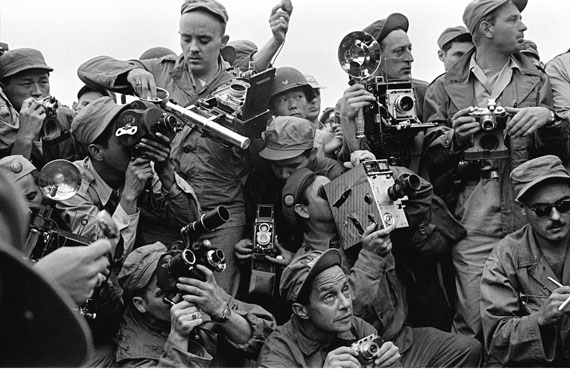
© Werner Bischof / Magnum Photos
Werner Bischof »
Standpunkt
Hommage zum 100. Geburtstag
Exhibition: 29 Jun – 11 Sep 2016
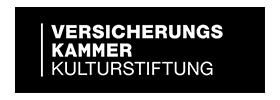
Kunstfoyer
Thierschplatz 6
80538 München
+49 (0)89-2160 2244
kunstfoyer@vkb.de
www.versicherungskammer-kulturstiftung.de
Mon, Tue, Thu 10-18, Fri 10-20; Sat, Sun 10-18
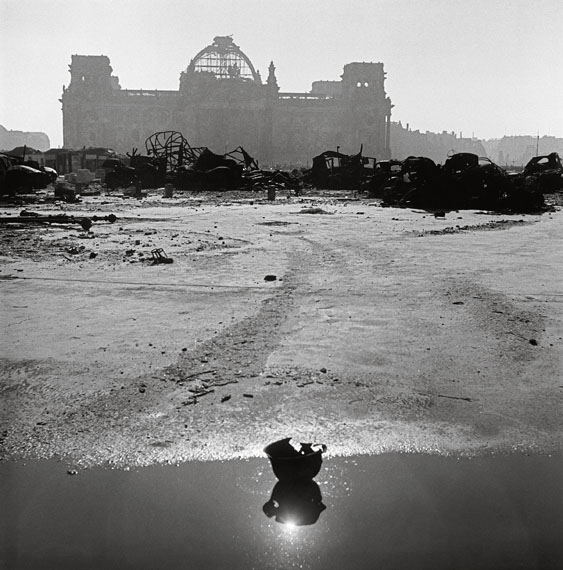
© Werner Bischof / Magnum Photos
Werner Bischof
"Standpunkt. Tribute to the 100th anniversary of the Swiss Magnum photographer"
Exhibition: 29 June – 11 September, 2016
Swiss Magnum photographer Werner Bischof worked as a photojournalist for the high-circulation magazines "Life" and "Picture Post." Prior to his untimely death in 1954 he created a multifaceted oeuvre within the span of but a few years. April 2016 marked the 100th anniversary of his birth, and the exhibition at the Kunstfoyer is an homage to his life’s work. Around 220 vintage prints and documents from the Werner Bischof Estate provide a comprehensive overview of his studio work, his photographs of post World War II Europe, his feature stories on Asia, and his photographs taken in the USA and South America. The contact sheets and original prints from the estate will be on exhibition for the first time. With this exhibition and the publications that accompany it, we are pleased to present an in-depth look at the photographer’s work and views.
The exhibition Werner Bischof. Standpunkt was curated by Marco Bischof and Isabel Siben for the Kunstfoyer Munich. For the Werner Bischof Estate it represents the most significant exhibition to date, and it also represents the first time that Bischof’s vintage prints have ever been exhibited. The exhibition had its debut at the Musée d´Elysée, Lausanne, in early 2016 and further international stops are in the planning.
Early on, Werner Bischof (1916 –1954) made a name for himself as a studio and commercial photographer with his fascinating compositions of light and shadow. In the wake of the Second World War, he documented the devastation in Europe, the streams of refugees, and displaced persons. His photographs illustrate the suffering and destruction wrought by the war. His motto was: "It isn’t a matter of transforming photography into art in the bygone sense. What matters is the deep social responsibility of the photographer who employs the elementary photographic means at his disposal to perform a job that cannot be done by any other means."
In this spirit Bischof created images that, although they show bitter poverty and hardship, still document the inner strength and willpower of the people they portray. The superficiality and sensation mongering of the editorial business were repulsive to him; nevertheless he was usually assigned to cover troubled regions. During his brief career, Werner Bischof set new standards of quality and ethics in photography. In his person, aesthetic sense, elementary form-giving power, and human commitment combined together to form an inner unity: "I felt driven to become acquainted with the true face of the world. Our good, satiated life caused many to lose sight of the colossal privation outside our borders."
The exhibition is arranged in chapters titled "Studio," "Post-1945 Europe," "Asia," "Exhibition 1953," and "USA / South America."
The exhibition is accompanied by the lavishly illustrated book "Werner Bischof. Standpunkt" published by Verlag Scheidegger & Spiess. Price: 77.- €
�
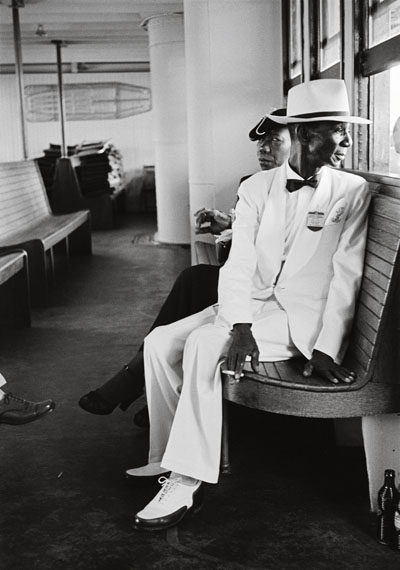
© Werner Bischof / Magnum Photos
Werner Bischof
"Standpunkt. Hommage zum 100. Geburtstag des Schweizer Magnum-Fotografen"
Ausstellung: 29. Juni bis 11. September 2016
Der Schweizer Magnum-Fotograf Werner Bischof arbeitete als Bildjournalist für die auflagenstarken Magazine "Life" und "Picture Post". Bis zu seinem frühen Tod 1954 entstand in nur wenigen Jahren ein vielschichtiges Werk. Im April 2016 jährte sich sein Geburtstag zum 100. Mal. Die Ausstellung im Kunstfoyer ist eine Hommage an dieses Lebenswerk. Rund 220 vintages (zeitgenössische Originalabzüge) und Dokumente aus dem Werner Bischof Estate geben einen umfassenden Überblick über seine Studioarbeiten, seine Aufnahmen zu Europa nach dem Zweiten Weltkrieg, seine Asienreportagen und seine Bilder aus den USA und Südamerika. Die Kontaktbögen und Originalabzüge aus dem Estate werden zum ersten Mal öffentlich gezeigt.
Die Ausstellung wurde von Marco Bischof und Isabel Siben für das Kunstfoyer München kuratiert. Für den Werner Bischof Estate ist es die bislang bedeutendste Ausstellung, die über den Fotografen Werner Bischof konzipiert wurde, da zum ersten Mal zeitgenössische Originalabzüge (vintages) gezeigt werden. Anfang des Jahres 2016 war die Ausstellung im Musée d´Elysée, Lausanne, zu sehen. Weitere internationale Stationen sind in Planung.
Werner Bischof (1916–1954) machte sich mit faszinierenden Kompositionen aus Licht und Schatten schon früh als Studio- und Werbefotograf einen Namen. Nach dem Ende des Zweiten Weltkriegs dokumentierte er als Fotojournalist das verwüstete Europa, die Flüchtlingsströme und die Vertriebenen. Seine Bilder schildern das Leid und die Zerstörungswut des Krieges. Sein Motto lautete: "Es kommt nicht darauf an, aus der Fotografie wie im alten Sinne eine Kunst zu machen, sondern auf die tiefe soziale Verantwortung des Fotografen, der mit den gegebenen elementaren fotografischen Mitteln eine Arbeit leistet, die mit anderen Mitteln nicht zu leisten wäre."
In diesem Sinne schuf Bischof Bilder, die zwar bittere Armut und tiefes Leid zeigen, doch auch Dokumente einer inneren Kraft und Willensstärke der abgebildeten Menschen sind. Die Oberflächlichkeit und Sensationslust des Redaktionsgeschäftes stießen ihn ab, dennoch wurde er meist in Krisengebiete entsandt. In den wenigen Jahren seiner Tätigkeit setzte Werner Bischof neue Maßstäbe für Qualität und Ethik in der Fotografie. Ästhetisches Gefühl, elementare Formkraft und humanes Engagement verbanden sich bei ihm zu einer inneren Einheit: "Es trieb mich hinaus, das wahre Gesicht der Welt kennen zu lernen. Unser gutes, gesättigtes Leben nahm vielen den Blick für die ungeheure Not außerhalb unserer Grenzen." Die Ausstellung gliedert sich in die Kapitel "Studio", "Europa nach 1945", "Asien", "Ausstellung 1953" und "USA / Südamerika".
Zur Ausstellung ist das umfangreich bebilderte Buch "Werner Bischof. Standpunkt" beim Verlag Scheidegger & Spiess erschienen (77€).�
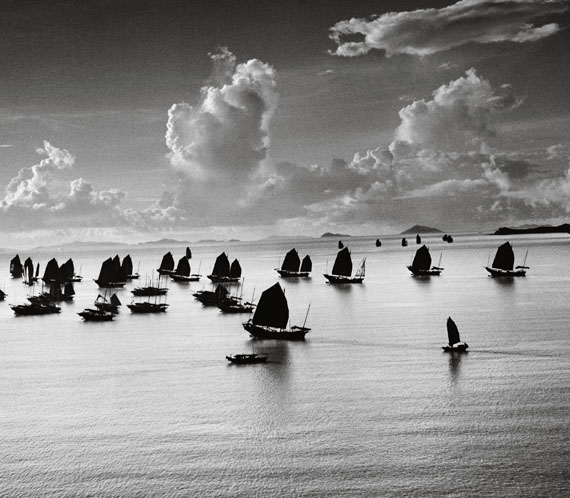
© Werner Bischof / Magnum Photos